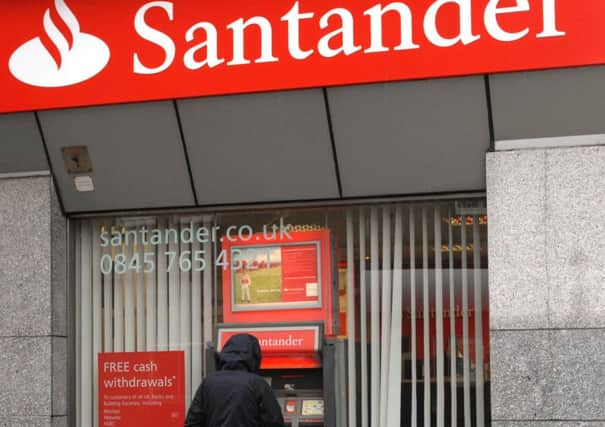Jeff Salway: Santander's cut is cash savings wake-up call


The implication was that customers should vote with their feet and transfer to a different account.
But it was the wrong question, for two reasons.
Firstly, if there were any prospect that customers would take their business elsewhere there’s a decent chance they wouldn’t have been treated so shoddily in the first place.
Advertisement
Hide AdAdvertisement
Hide AdThe Santander announcement (that the rate for people with up to £20,000 in their account will be halved in November to 1.5 per cent) came just six days after the Competition and Markets Authority ended a two-year investigation into the current account market by concluding that consumers just need to switch a bit more.
“As you were”, was the message to the banks, and six days later Santander made its move. The cut to the 123 deal has been on its way all year, with the attractive rate creating a level of demand the bank doesn’t want or need.
In that context the cut is entirely fair. Until you remember that earlier this year it raised the fee on the account from £2 to £5. Still fair? Not when there’s no relation between the fee and what you get for it.
But Santander was able to make the changes in the confidence that the vast majority of customers will stay put.
Which takes us to the second reason why the question of whether to switch to a different account is a red herring. That’s because we should be asking whether to ditch cash savings products altogether.
By the time interest rates increase and cash savings again become competitive savers will have endured at least a decade of pathetic returns. Millions of us have cash in accounts that are slowly losing value to inflation.
While cash returns continue to be driven down by low interest rates and government schemes giving lenders access to cheap finance, inflation is tipped to hit 3 per cent by the year-end.
You’re hardly in a risk-free environment when providers can reduce interest rates whenever they feel like it. There were 154 savings cuts in July alone, according to Moneyfacts, and they’ll keep coming even as inflation creeps up.
Advertisement
Hide AdAdvertisement
Hide AdAt least the risk in stock market-based investments is offset by the prospect of some actual growth and income. The yield on the FTSE 100 is around 3.7 per cent and many UK equity income funds pay more than that.
There are other options if you’re not comfortable with market risk, most obviously the peer-to-peer lenders offering returns of between 3 and 8 per cent.
That people are anxious about market-linked investments is entirely understandable, given the hyperbolic headlines every time there’s a correction. The banks are culpable too, after years of flogging useless “low risk” structured products and overpriced in-house funds that failed to perform.
But the fact that banks can halve the rates on savings products without losing customers says all you need to know about the health of the cash savings market.
We need to review our perception of what constitutes “low risk”. If you’re in it for the long-term, keeping it all in cash amounts to reckless caution.